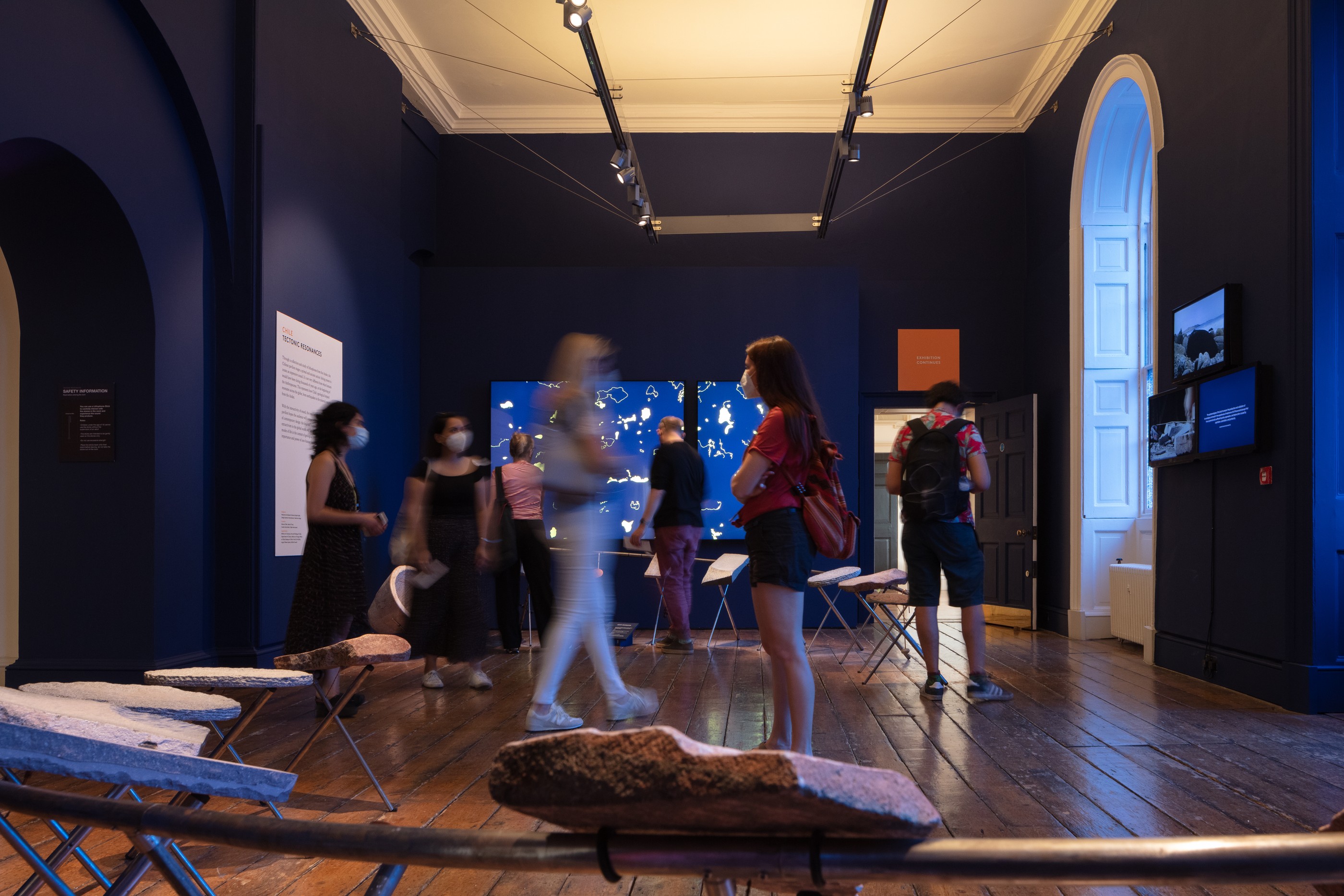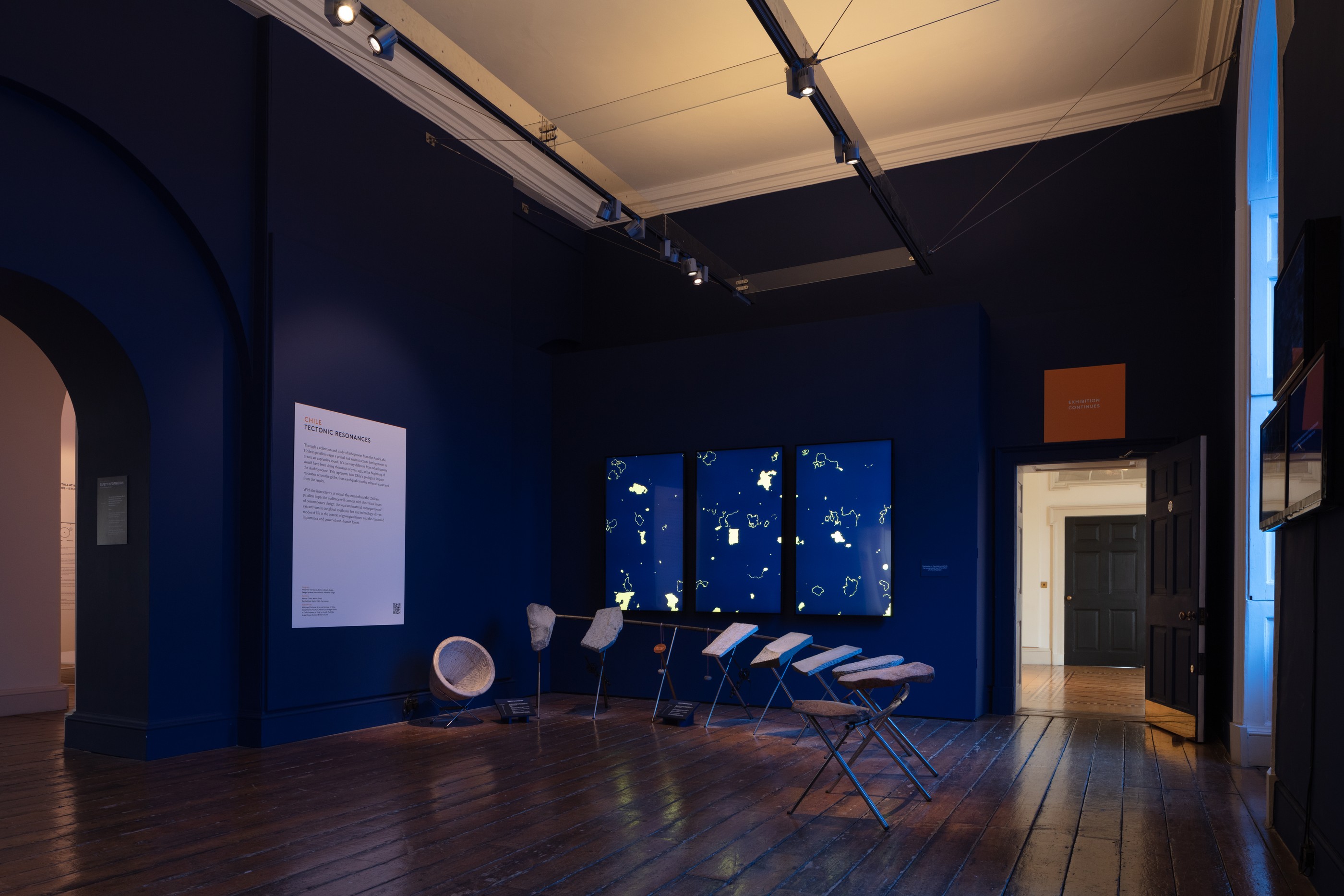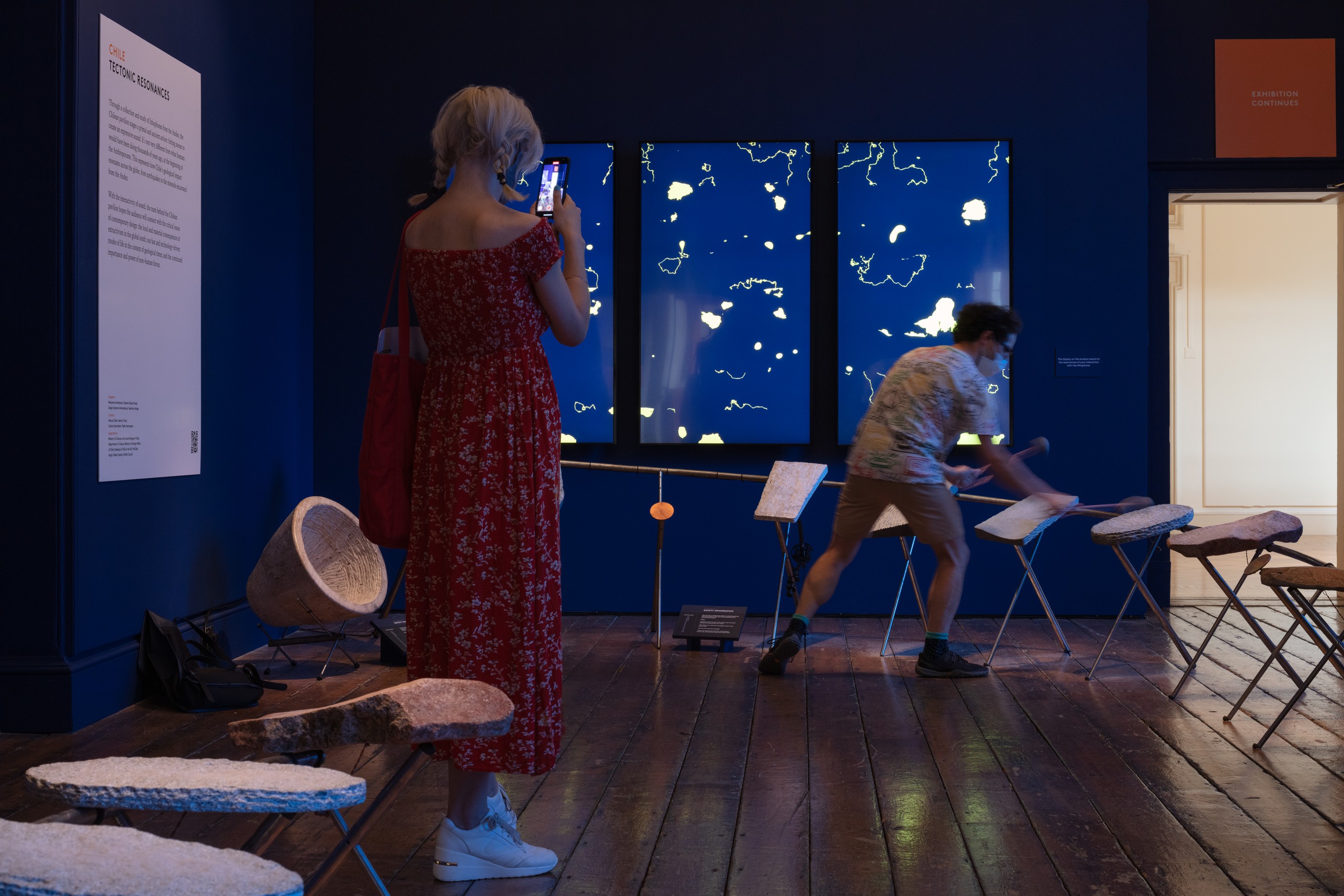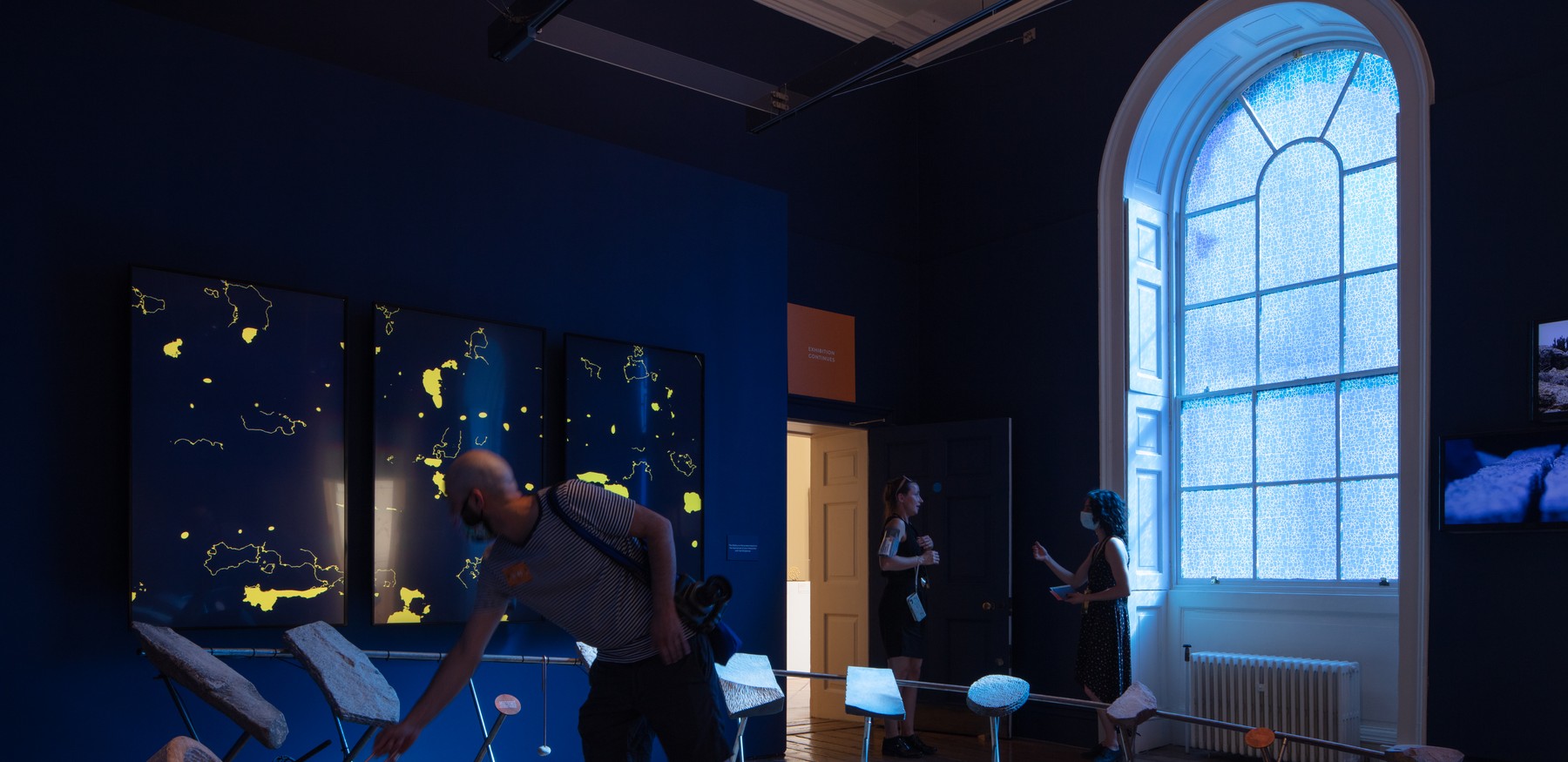In 2021, we had the pleasure of being part of the team behind the Chilean Pavilion, Tectonic Resonances, at the London Design Biennale which was awarded The Most Outstanding Overall Contribution. The Chilean Pavilion explored the concept of resonance within ancestral lithic technologies, and invited visitors to step into an experience that explores ancient ritual instruments reimagined through contemporary technology and design.

Illuminating Sound
In a dark room, a visitor strikes a stone with a rock mallet. The resulting waves sound off in a series of metallic clinks, the echoes of earth against earth. In response, the room begins to pulse with an amber glow, illuminating a set of seven flat stones raised alongside one another on metal stands. Together, they constitute a lithophone, a percussive instrument that uses the resonant qualities of rock to produce sound.
The Chilean Pavilion invites visitors to engage with Indigenous ways of knowing that challenge anthropocentrism. Lithophonic technology has been harnessed by Indigenous peoples around the world, but this piece works with wisdom of the Mapuche, one of the original peoples of Chile. Through the fossil record, the Chilean stone itself holds pieces of the Mapuche’s 18,500 years of history in the settler colonial state. Ancestral Mapuche lands now also house the seven quarries from which the pavilion’s lithophonic stones originate, nationally recognized as sites of lithic artistry.
Grounds of Encounter
We found our entry into the dialogue by viewing the quarries as grounds of encounter. While quarries typically come into being through the harsh process of extraction, wherein stone fragments are abstracted and pulverized, the stones of the pavilion’s lithophone were identified through fragile moments of recognition. Artisan collaborators traversed the quarry on foot, meeting each stone with knocking fingers to check for resonance. These encounters between mineral and human bodies mark the continued expression of Indigenous knowledge and makes it possible for humans to recognize the integrity possessed by each stone.
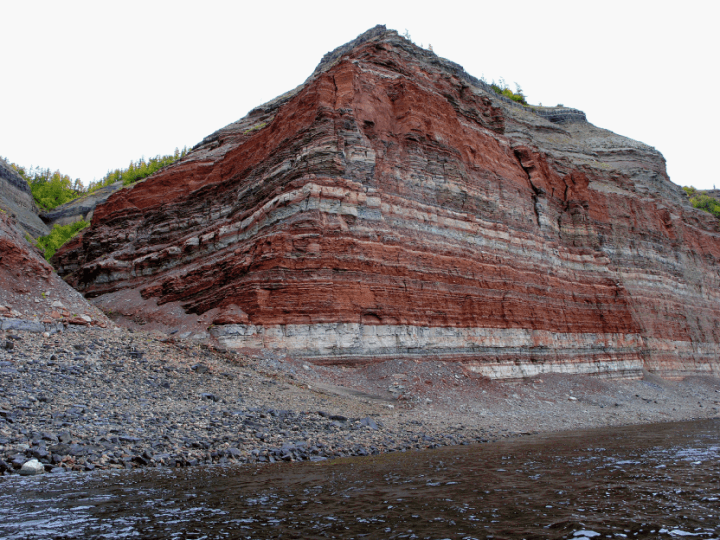
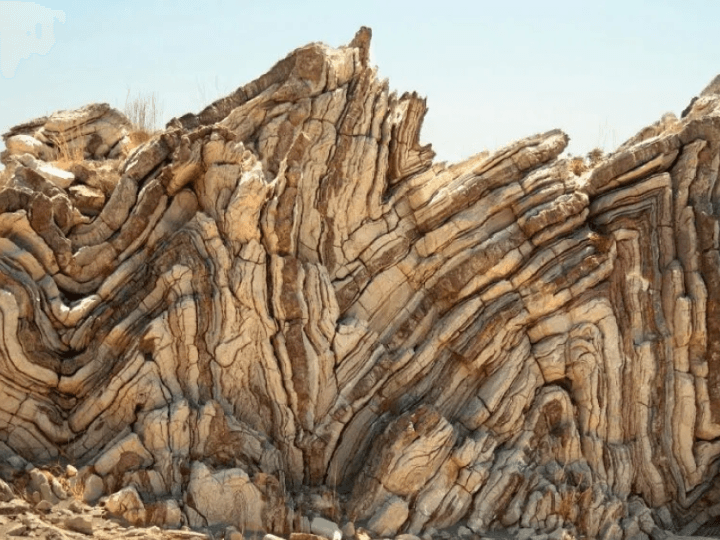
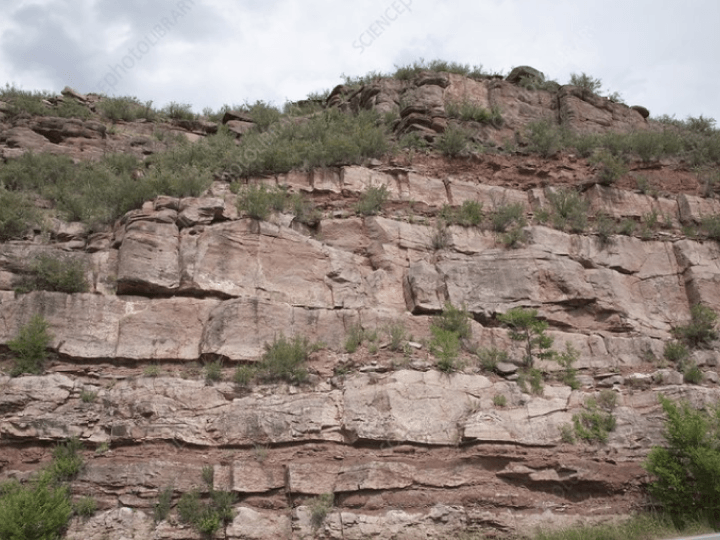
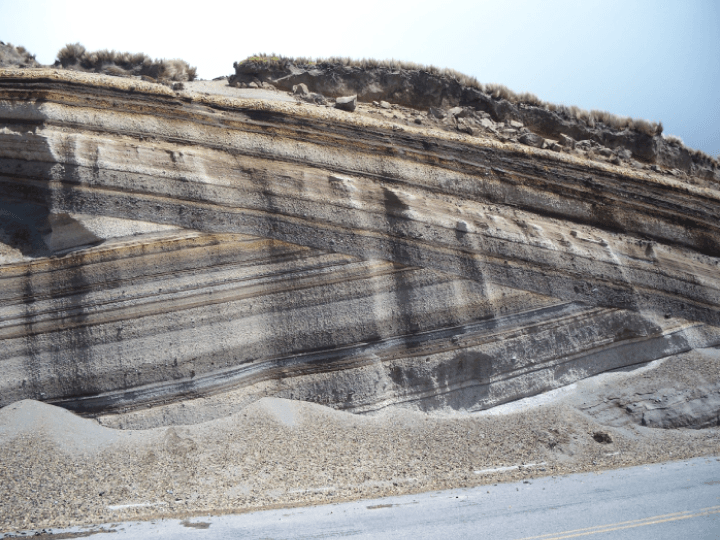
Quarries expose striated layers of blue, orange, red, and gray sediment, each with its own resonant frequency. But as we cut into the earth’s crust, the layers reveal another archive absent from modernity’s limiting frame. In the quarry, the speeding rhythms of the earth's surface come into contact with deep, geological time. These leaden temporal passages only become perceptible to humans visually, through the layers of the stratigraphic record. By experimenting with the visibility of deep time, we were able to anchor the London exhibition back to its origins in the quarry.
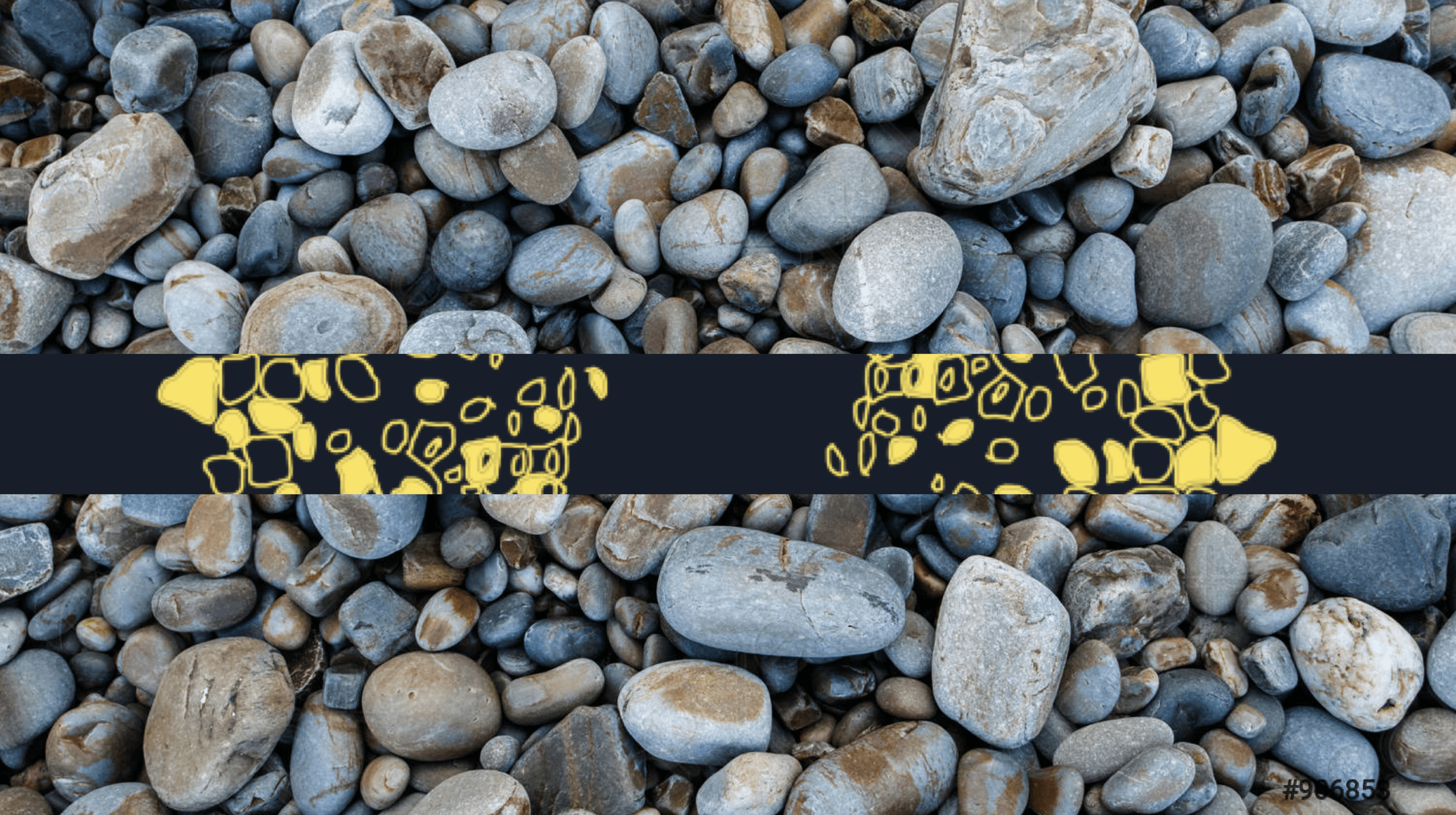
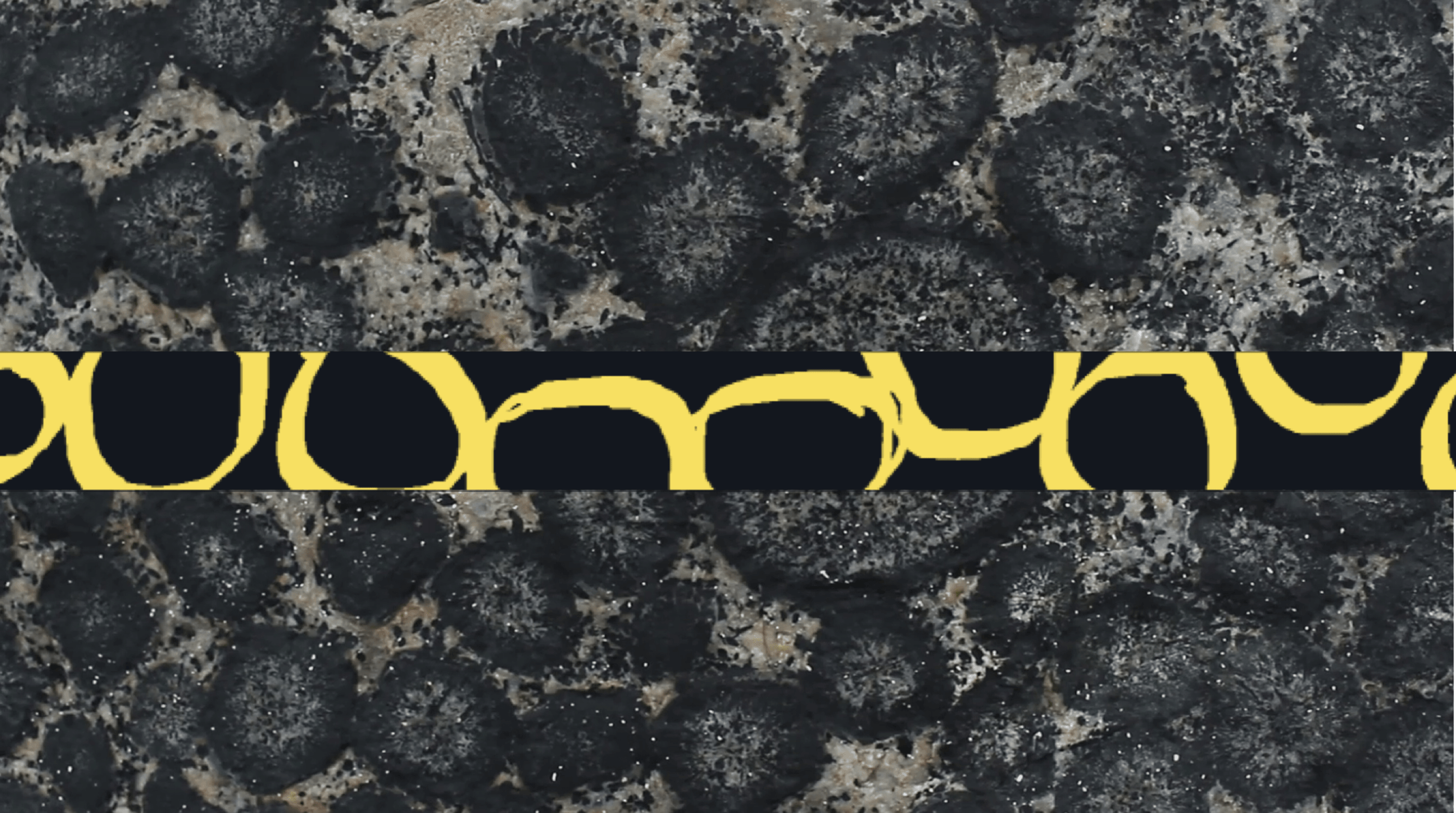
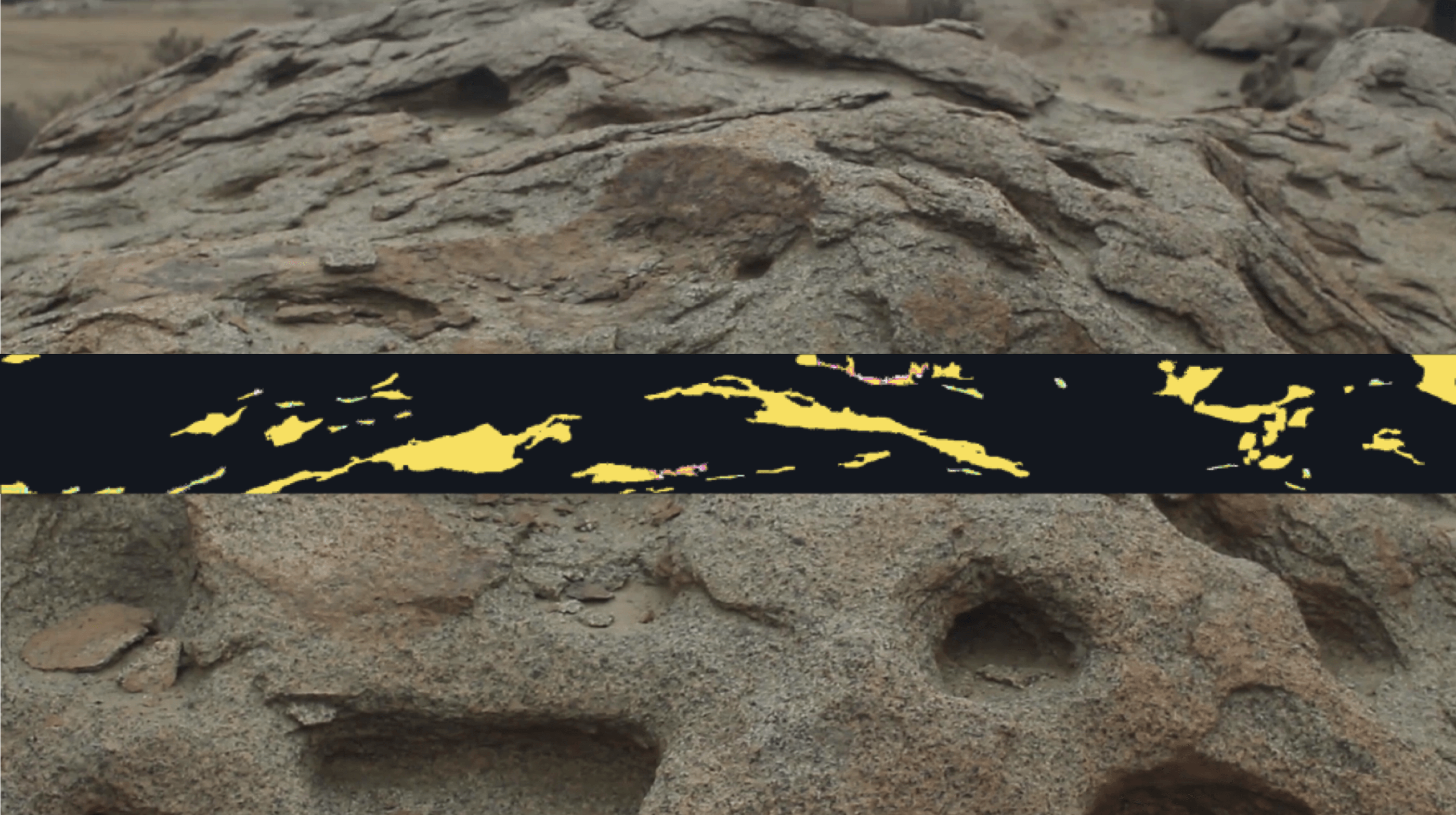







We looked at the numerous patterns communicated by rocks and stones in the Chilean landscape in order to build out a referential visual language. We started with tracings of the textures, which we then fine tuned to facilitate the strongest interaction among the lithophone, the quarry, the pavilion, and its visitors. Through a prototype in Processing, we simplified each pattern into only a few constituent shapes and then reassembled them in parametric repetitions. Each of these repetitions was arranged vertically in its own layer, animated to morph from one formation into the next. Against a dark background, we rendered the shapes in amber yellow that offers warm light to the pavilion while alluding to the golden fossilized resin. Some larger forms were broken down into hollow shapes to prevent them from flooding the room with too much light. The resulting patterns populate our digital strata with just enough lively movement to augment the sonic installation without muddling its sensory experience.
Conceptual Bridge
Tectonic Resonances sets the tone for the conceptual bridge between quarry and design world as it invites visitors into the dark belly of the pavilion and towards the lithophone. The arc of stones creates a liminal zone, both within and apart from the rest of the biennale, in which there is space to experience ancestral knowledge through resonance. In our collaboration with the curators and artists, we wanted our technological contribution to heighten this conceptual strength of the pavilion, rather than distract from it with bright lights and spectacle.
Creating layers
To strike this balance, we chose to produce a reactive design, only activated when visitors interact with the lithophone. Without any input from the instrument, the screens surrounding it display only subtle movements. Their slow shifts signal the constant movement happening under the surface of the earth as they wash the space in dim light. When an inquisitive visitor starts to play, the strata dance and glow in response to the frequency and speed of the sound. Each layer reacts to a different frequency coming from the stones, creating a slightly unpredictable texture that encourages playful experimentation with the lithopone. As time goes on and the playing becomes louder, the patterns continue to shift into larger shapes, progressively brightening the room.
Remote Calibration
Collaborating with the Chilean curatorial team for this project allowed us to get creative about our working process. Our existing remote infrastructure meant that we could work immediately and seamlessly together with our distant collaborators. But because this project constituted a physical space, we knew it was imperative that our contribution be perfectly calibrated to the site itself, which is why we built an interface to tweak the size, movement, and colors of the reactive strata remotely. The interface allowed us to continue making those tiny changes that turn an idea from a cool proof of concept into an immersive experience after the final components had been installed in the pavilion. This sort of flexibility is extra handy in a chaotic reality in which timelines shift, flights get canceled, and we can’t expect every moving piece of the puzzle to arrive exactly when we need it.
Interface for customizing the visualization
By creating an iterative tool that enables no-fuss changes at a distance, we could continue refining the visual output without needing all contributors from both teams to be on-site in London. We were able to color correct the strata background to match the blue paint of the room and better disguise the monitors. Using the specific microphones of the pavilion and the actual amount of noise in the room, we could also calibrate the speed of the changing patterns to decelerate back to their base states. This meant that each new stroke of the instrument would register and produce a different visualization, making continued interaction possible even with multiple players in the room.
Resonating Communication
No good thing is an island, and Tectonic Resonances is a testimony to that. From the curatorial dialogue between ancestral wisdom and anthropocentrism to the augmentation of Indigenous technologies with modern ones, no component of this project would speak with as much conviction standing by itself. Working across – geographies, disciplines, ways of knowing, and any other boundary we come up against – is where we find our most generative projects. It’s at the core of our identity as a studio, meaning that every collaboration has its own overlaps and intersections from which we find a point where communication resonates.
